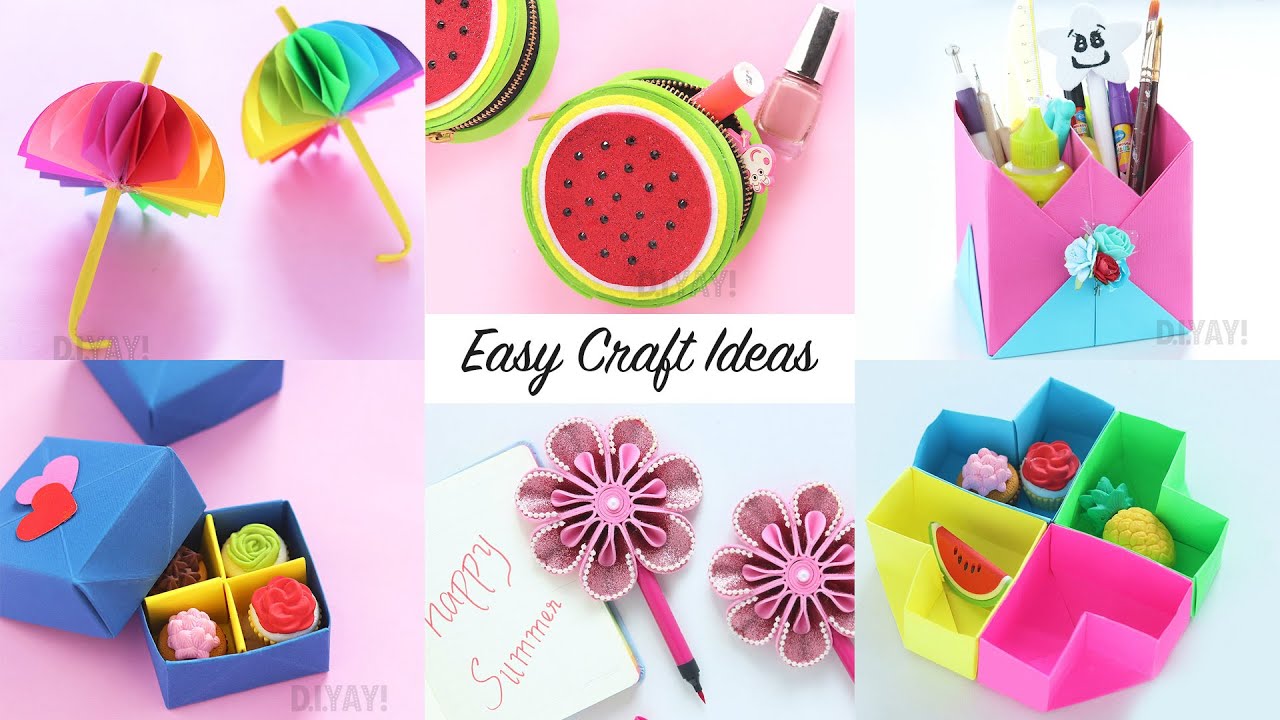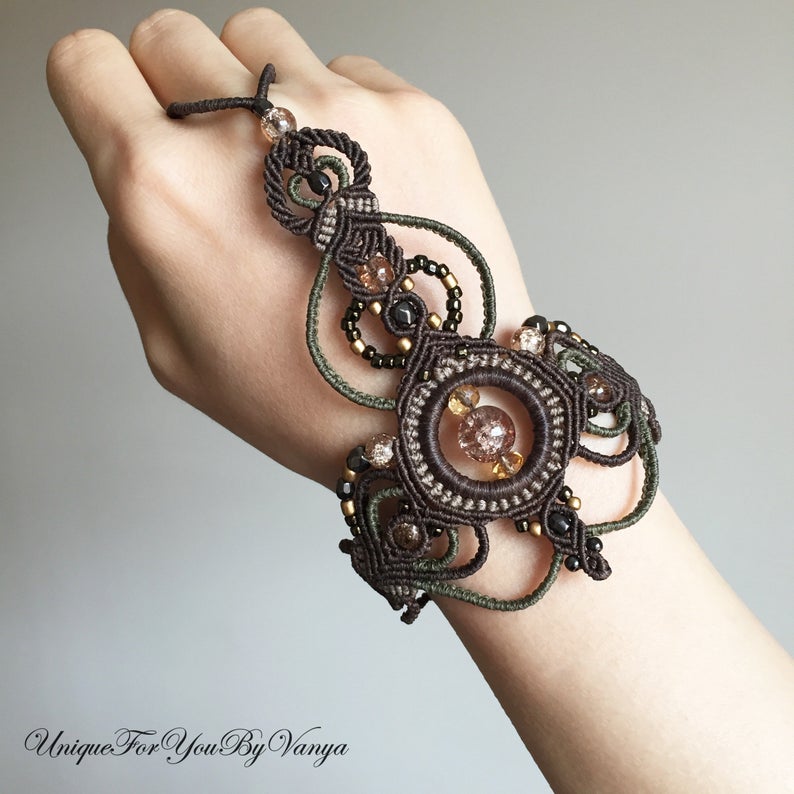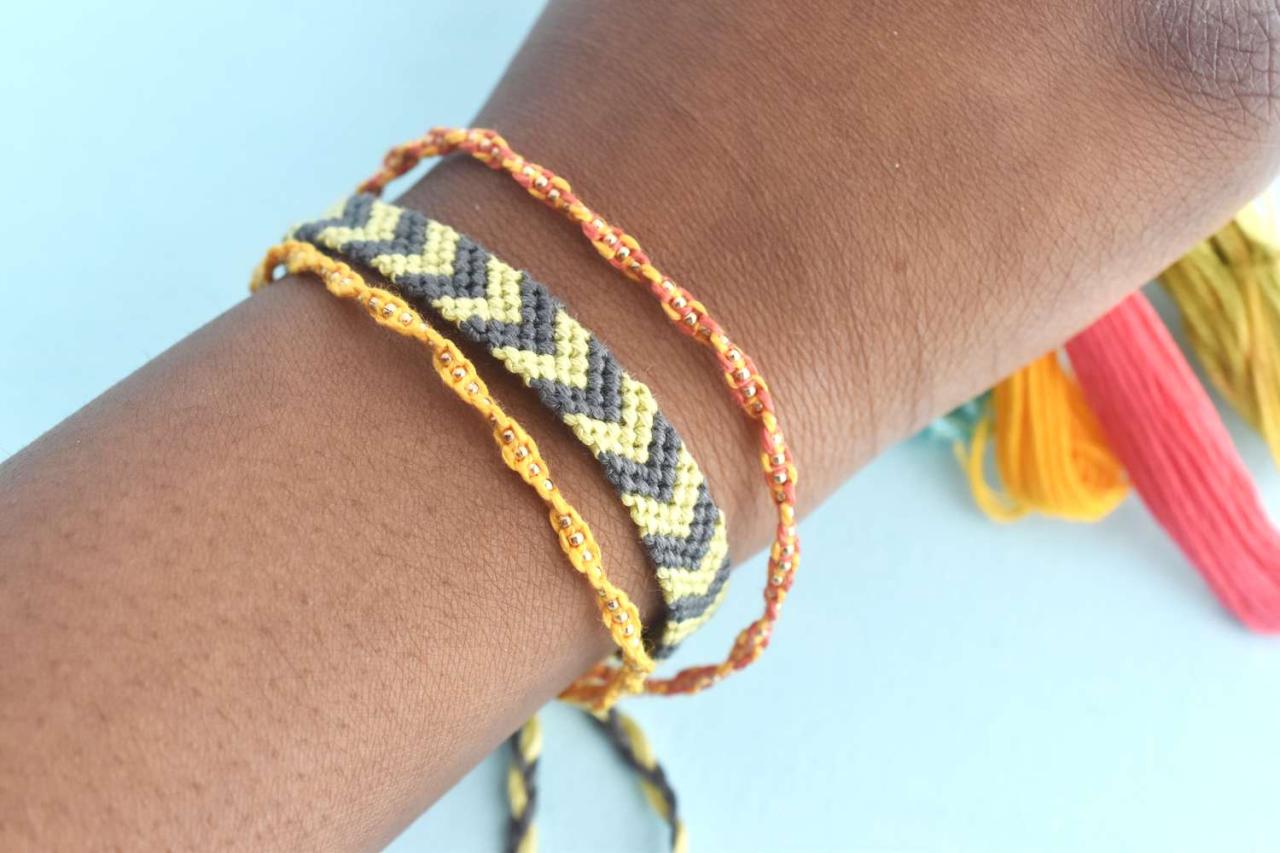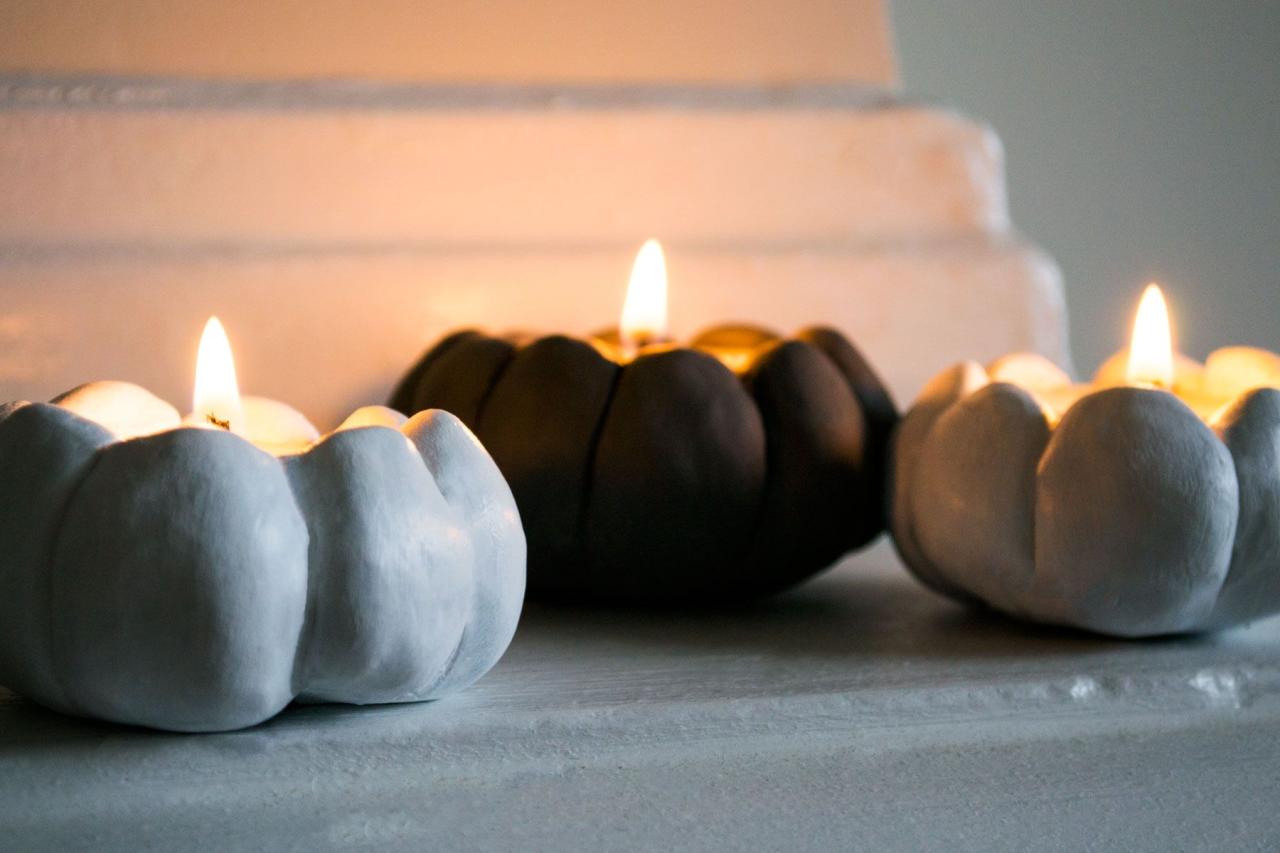Simple craft ideas offer a delightful way to tap into your creativity and bring joy to your life. Whether you’re a seasoned crafter or just starting out, these projects provide a welcoming space to explore your artistic side and create beautiful, functional, or simply fun items. From paper crafts and recycled creations to nature-inspired designs and textile wonders, there’s a world of possibilities waiting to be discovered.
This guide delves into a variety of simple craft ideas, offering step-by-step instructions, inspiring examples, and helpful tips to guide you through each project. Whether you’re looking for a relaxing hobby, a unique gift idea, or a way to personalize your surroundings, these simple crafts will ignite your imagination and provide endless opportunities for creative expression.
Paper Crafts
Paper crafts are a fun and accessible way to unleash your creativity, and they’re perfect for people of all ages and skill levels. Whether you’re looking for a relaxing activity or a challenging project, there’s a paper craft out there for you.
Simple Paper Crafts for Beginners
Here are a few simple paper crafts that are great for beginners:
- Paper Airplanes: Folding paper airplanes is a classic activity that’s easy to learn and can be customized in countless ways.
- Paper Chains: Paper chains are a simple and festive decoration that can be made with just a few strips of paper.
- Paper Flowers: Paper flowers are a beautiful and versatile craft that can be used to decorate your home, make cards, or even create a bouquet.
- Paper Masks: Paper masks are a fun and easy way to express your creativity and add some whimsy to your next party or event.
Instructions for Creating Paper Crafts
Here are some simple instructions for creating origami animals, paper airplanes, and paper flowers:
Origami Animals
Origami animals are a fun and challenging paper craft that can be made with just a single sheet of paper. Here’s a simple guide for making an origami crane:
- Start with a square piece of paper.
- Fold the paper in half diagonally to create a triangle.
- Fold the top point of the triangle down to the base.
- Fold the left and right corners of the triangle up to meet at the center.
- Fold the top flap down.
- Fold the left and right sides of the flap inwards.
- Flip the paper over.
- Fold the bottom flap up.
- Fold the left and right sides of the flap inwards.
- Fold the top flap down to form the head of the crane.
- Fold the sides of the head to form the beak.
- Use your fingers to shape the wings and tail of the crane.
Paper Airplanes
Paper airplanes are a fun and easy way to experiment with different designs and see how far they can fly. Here’s a simple guide for making a classic paper airplane:
- Start with a rectangular piece of paper.
- Fold the paper in half lengthwise.
- Fold the top corners down to meet at the center crease.
- Fold the top flap down again.
- Fold the wings up at an angle.
- Adjust the angle of the wings to fine-tune the airplane’s flight.
Paper Flowers
Paper flowers are a beautiful and versatile craft that can be used to decorate your home, make cards, or even create a bouquet. Here’s a simple guide for making a paper rose:
- Start with a square piece of paper.
- Fold the paper in half diagonally to create a triangle.
- Fold the top point of the triangle down to the base.
- Cut a spiral shape into the folded paper, starting from the base and working your way up to the top.
- Unfold the paper and gently roll the spiral shape to create the rose.
- Use glue or tape to secure the base of the rose.
- You can add leaves, stems, or other embellishments to your paper rose.
Paper Craft Projects
Here is a table with four columns, each showcasing a different paper craft project, including materials, instructions, and estimated time:
| Project | Materials | Instructions | Estimated Time |
|—|—|—|—|
| Paper Airplane | Paper | 1. Fold the paper in half lengthwise. 2. Fold the top corners down to meet at the center crease. 3. Fold the top flap down again. 4. Fold the wings up at an angle. 5. Adjust the angle of the wings to fine-tune the airplane’s flight. | 5 minutes |
| Paper Flower | Paper, Scissors, Glue | 1. Cut out a circle from the paper. 2. Fold the circle in half, then in half again. 3. Cut a spiral shape into the folded paper. 4. Unfold the paper and gently roll the spiral shape to create the flower. 5. Use glue to secure the base of the flower. | 10 minutes |
| Paper Mask | Paper, Scissors, Glue, String | 1. Draw a mask shape on the paper. 2. Cut out the mask shape. 3. Cut out eye holes. 4. Decorate the mask with paint, markers, or glitter. 5. Glue string to the sides of the mask to tie it on. | 15 minutes |
| Paper Chain | Paper, Scissors, Glue | 1. Cut strips of paper. 2. Fold the strips of paper into loops. 3. Glue the loops together to create a chain. | 20 minutes |
Recycled Crafts
Crafting with recycled materials is a fantastic way to reduce waste, save money, and create unique and beautiful items. It promotes sustainability by giving discarded items a new life and encourages creativity. By repurposing materials, you contribute to a greener environment and foster a sense of resourcefulness.
Creating Useful Objects
Recycling materials into useful objects is a practical and rewarding experience. Here are some ideas:
Cardboard Boxes
Cardboard boxes are versatile and can be transformed into various useful items.
- Storage Boxes: Cut and fold cardboard to create boxes for storing small items, such as toys, craft supplies, or clothing.
- Planters: Cut a hole in the bottom of a cardboard box and line it with plastic wrap or a garbage bag to create a planter for small plants or herbs.
- Organizers: Use cardboard to create dividers for drawers, shelves, or cabinets to keep things organized.
Plastic Bottles
Plastic bottles can be repurposed into various items around the house.
- Watering Cans: Cut the top off a plastic bottle and poke holes in the cap to create a simple watering can for plants.
- Bird Feeders: Cut a large hole in the side of a plastic bottle and attach a string to hang it. Fill the bottle with birdseed.
- Decorative Vases: Cut the top off a plastic bottle and decorate it with paint, fabric, or other embellishments to create a vase.
Old Newspapers
Old newspapers can be used for a variety of craft projects.
- Paper Mache: Soak old newspapers in water, then blend them with glue to create paper mache. This can be used to make sculptures, masks, or other decorative items.
- Gift Wrap: Use old newspapers to wrap gifts for a unique and eco-friendly alternative to traditional wrapping paper.
- Decorative Paper: Cut old newspapers into interesting shapes and use them to create collage art, book covers, or decorative elements for crafts.
Textile Crafts

Textile crafts are a fun and versatile way to express your creativity and transform simple materials into beautiful and functional items. From utilizing fabric scraps to dyeing fabric with natural ingredients, there are numerous possibilities for creating unique textile crafts.
Patchwork Quilts
Patchwork quilts are a classic textile craft that involves sewing together pieces of fabric in a variety of patterns. The process of creating a patchwork quilt is a great way to use up fabric scraps and create a unique and personalized piece of art.
- Choose your fabrics: Select a variety of fabrics in different colors, patterns, and textures. You can use scraps of fabric, old clothes, or even new fabric.
- Cut your fabric: Cut your fabric into squares, rectangles, or other shapes. The size and shape of the pieces will determine the overall design of your quilt.
- Sew the pieces together: Sew the fabric pieces together in rows, then sew the rows together to create the quilt top.
- Add a batting layer: Place a layer of batting on top of the quilt top. Batting is a soft, fluffy material that provides insulation and gives the quilt its texture.
- Add a backing layer: Place a backing fabric on top of the batting. The backing fabric should be the same size as the quilt top.
- Quilt the layers together: Quilt the layers together by stitching through all three layers. Quilting can be done by hand or by machine.
- Bind the edges: Finish the edges of the quilt by binding them with fabric strips.
Fabric Flowers, Simple craft ideas
Fabric flowers are a beautiful and versatile craft that can be used to decorate anything from hair clips to clothing. Fabric flowers can be made from a variety of fabrics, including felt, silk, and cotton.
- Choose your fabric: Select a fabric that is lightweight and easy to work with. Felt is a popular choice for fabric flowers because it is easy to cut and shape.
- Cut out the flower shapes: Cut out the flower shapes from the fabric. You can use a pattern or freehand it.
- Sew the flower pieces together: Sew the flower pieces together to create the flower. You can use a sewing machine or sew by hand.
- Add embellishments: Add embellishments to the flower, such as beads, sequins, or buttons.
- Attach the flower to a base: Attach the flower to a base, such as a hair clip, a headband, or a piece of clothing.
Braided Rugs
Braided rugs are a traditional craft that involves braiding strips of fabric together to create a rug. Braided rugs are a great way to use up fabric scraps and add a touch of warmth and color to your home.
- Cut fabric strips: Cut fabric strips into long, thin pieces. The width of the strips will determine the thickness of the braid.
- Braid the strips: Braid the fabric strips together to create a long, continuous braid.
- Sew the braids together: Sew the braids together in a spiral to create the rug.
- Add a backing: Add a backing to the rug to make it more durable.
Jewelry Making
Jewelry making is a fun and creative hobby that allows you to express your personal style and create unique pieces. With a little patience and practice, you can learn to make beautiful jewelry using beads, wire, or other materials.
Beading
Beading is a popular jewelry-making technique that involves stringing beads together to create necklaces, bracelets, earrings, and other accessories. You can use a variety of beads, including glass, metal, wood, and plastic, to create different looks.
Beading techniques vary depending on the type of beads and the desired design. Here are some common beading techniques:
- Stringing: This is the simplest beading technique, which involves threading beads onto a string or wire. You can use a variety of materials for stringing, including thread, fishing line, and wire.
- Knotting: This technique involves tying knots between each bead to create a secure and durable piece of jewelry. Knotting is often used for bracelets and necklaces, as it helps to prevent the beads from sliding around.
- Weaving: This technique involves weaving beads together to create intricate patterns. Weaving can be done with a variety of materials, including thread, wire, and even leather.
Wire Wrapping
Wire wrapping is another popular jewelry-making technique that involves using wire to create beautiful and intricate designs. You can use wire to wrap beads, stones, and other materials to create earrings, pendants, and other jewelry pieces.
Wire wrapping is a versatile technique that can be used to create a wide range of styles. Here are some basic wire wrapping techniques:
- Coil Wrapping: This technique involves wrapping wire around a bead or stone in a spiral pattern. This creates a secure and decorative setting for the bead or stone.
- Wire Weaving: This technique involves weaving wire around a bead or stone to create a more intricate design. Wire weaving can be used to create a variety of patterns, including geometric designs and floral motifs.
- Wire Sculpture: This technique involves using wire to create three-dimensional sculptures that can be used as earrings, pendants, or other jewelry pieces.
Macrame
Macrame is an ancient art form that involves knotting cords together to create intricate patterns. Macrame can be used to create a variety of jewelry pieces, including necklaces, bracelets, and earrings.
Macrame jewelry is often characterized by its intricate patterns and bohemian style. Here are some basic macrame knots that can be used to create jewelry:
- Square Knot: This is the most basic macrame knot, and it is used to create a variety of patterns.
- Half Hitch Knot: This knot is used to secure cords together and to create a variety of decorative elements.
- Bar Knot: This knot is used to create a sturdy and decorative edge for macrame projects.
Painting and Drawing: Simple Craft Ideas
Painting and drawing are excellent ways to express your creativity and explore different artistic styles. Whether you’re a beginner or an experienced artist, there are many simple techniques and projects that can be enjoyed by anyone.
Basic Techniques
These techniques are foundational to both painting and drawing, and they can be mastered using simple materials like watercolors, crayons, or markers.
Watercolors
Watercolors are a versatile medium that allows for both delicate washes and bold strokes.
- Layering: Apply thin layers of watercolor, allowing each layer to dry before applying the next. This creates depth and dimension.
- Blending: Use a wet brush to blend colors together, creating smooth transitions. You can also use a dry brush to create a more textured effect.
- Glazing: Apply a thin layer of transparent watercolor over a dry layer of paint. This can add depth, luminosity, and a soft effect.
Crayons and Markers
Crayons and markers are great for beginners due to their ease of use and vibrant colors.
- Layering: Like watercolors, you can layer crayons and markers to create depth and dimension. Lighter colors should be applied first, followed by darker colors.
- Blending: Crayons can be blended using a finger or a blending tool. Markers can be blended by layering colors or using a blending pen.
- Scratching: Use a sharp object to scratch through the crayon or marker layer, revealing the underlying color or paper. This creates a textured effect.
Drawing Techniques
Drawing techniques help to create different effects and styles in your artwork.
- Sketching: Use light, quick strokes to capture the basic form and composition of your subject. This is a great way to practice and develop your observation skills.
- Shading: Use different shades of a color to create depth and dimension in your drawing. You can achieve this by applying more pressure to your pencil or by using different shading techniques, such as hatching, cross-hatching, or stippling.
- Patterns: Incorporate patterns into your drawings to add visual interest and texture. You can use geometric patterns, organic patterns, or create your own unique designs.
Simple Painting and Drawing Projects
Here are some simple painting and drawing projects that are perfect for beginners:
- Still Life: Arrange a group of objects, such as fruit, flowers, or household items, and paint or draw them. This is a great way to practice observation skills and learn about composition.
- Landscape: Paint or draw a scene from nature, such as a forest, a mountain, or a beach. Use different colors and textures to create a sense of depth and realism.
- Abstract Art: Experiment with different colors, shapes, and textures to create abstract paintings or drawings. This is a great way to express your creativity and explore different artistic styles.
Ending Remarks
So, gather your materials, embrace your inner artist, and embark on a journey of creative exploration. Simple craft ideas provide a gateway to a world of artistic fulfillment, allowing you to create beautiful and meaningful objects while enjoying the therapeutic process of crafting. Let your imagination run wild, and discover the joy of creating something unique and personal.
Simple craft ideas can be a great way to add a personal touch to your home. If you’re looking for a project that can transform your space, consider building a diy lamp. With a little creativity and some basic materials, you can create a unique and stylish lamp that complements your décor.
From repurposed materials to unique designs, the possibilities are endless.




